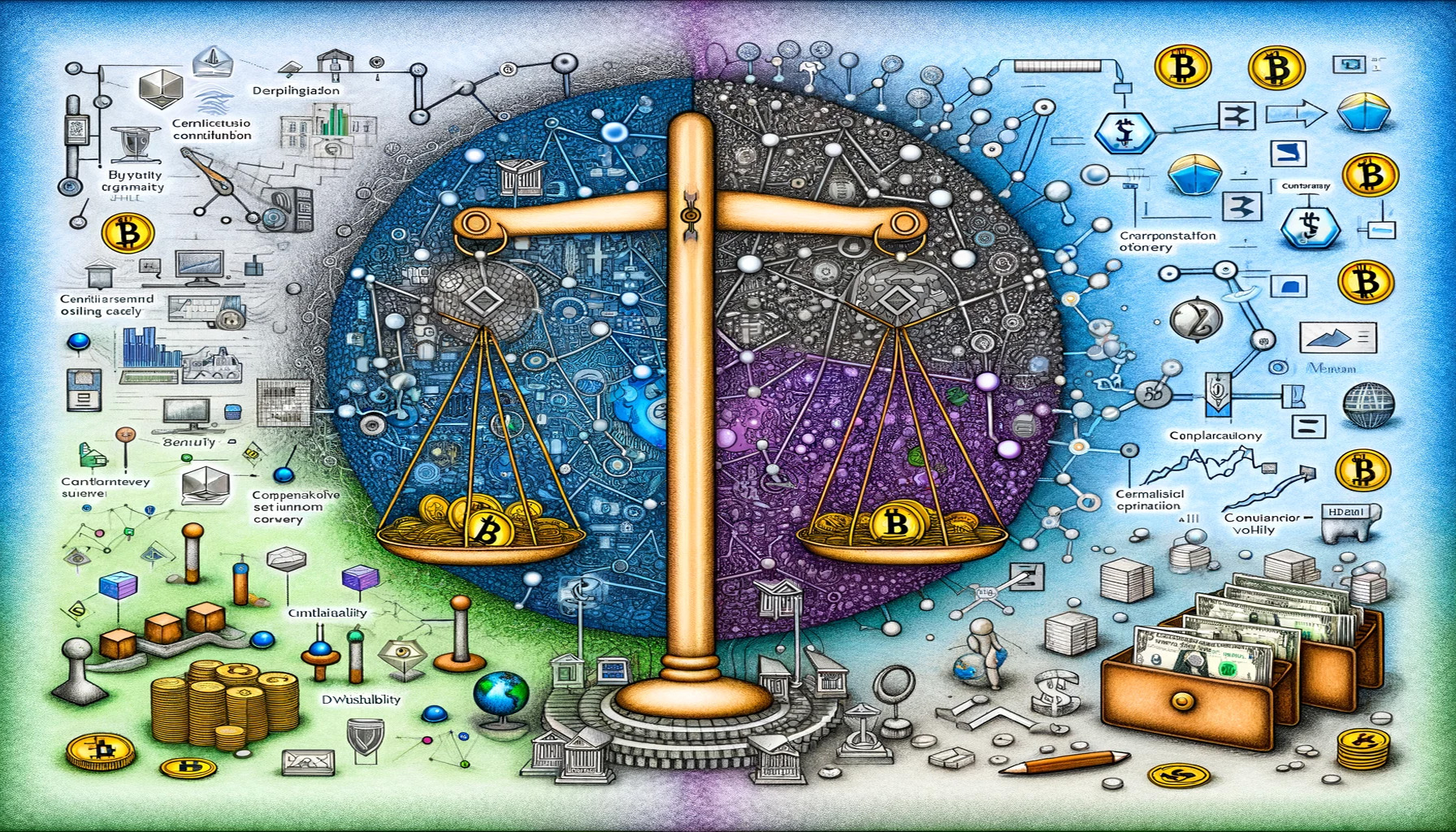
Digital currency is a form of currency that is available only in digital or electronic form, not in physical form like paper money or coins. It includes cryptocurrencies like Bitcoin, as well as digital versions of traditional currencies. Here are twenty aspects that explain what digital currency is and how it differs from traditional money:
-
Form: Digital currency exists only in digital form, while traditional money has physical forms such as paper notes and metal coins.
-
Transaction Process: Digital currency transactions occur through electronic systems, often utilizing blockchain technology, whereas traditional money transactions can occur physically or electronically.
-
Storage: Digital currencies are stored in digital wallets or on blockchain ledgers, as opposed to physical wallets, safes, or banks for traditional money.
-
Creation and Issuance: Traditional money is issued by governments and central banks, while digital currencies can be issued by private entities, decentralized groups, or algorithms in the case of cryptocurrencies.
-
Decentralization: Many digital currencies, especially cryptocurrencies, operate on decentralized networks, unlike traditional currencies, which are controlled by central authorities.
-
Anonymity and Privacy: Digital currencies can offer greater anonymity in transactions compared to traditional banking systems, where transactions are closely tied to personal identity.
-
Global Use: Digital currencies, particularly cryptocurrencies, are designed for global use and are not bound by national borders, unlike traditional currencies, which are country-specific.
-
Transaction Speed: Digital currency transactions, especially those on newer blockchain networks, can be significantly faster than traditional bank transactions, which may take days for cross-border transactions.
-
Transaction Costs: Digital currencies can have lower transaction costs, especially for international transfers, compared to traditional banking systems with higher fees for international transactions.
-
Security Features: Digital currencies use cryptographic security, making transactions secure and tamper-proof, which differs from the physical security features of traditional money.
-
Supply Control: Cryptocurrencies have a predefined supply limit (like Bitcoin’s 21 million cap), whereas traditional currencies can be printed indefinitely by central banks.
-
Smart Contracts: Some digital currencies support smart contracts that automatically execute transactions when conditions are met, unlike traditional money which requires manual enforcement of contracts.
-
Divisibility: Digital currencies can be divided into very small units (e.g., Bitcoin can be divided into 100 million satoshis), offering more divisibility than traditional currencies, which are limited by physical denominations.
-
Accessibility: Digital currencies can be accessed by anyone with an internet connection, potentially providing financial services to unbanked or underbanked populations.
-
Inflation Resistance: Certain digital currencies have mechanisms to resist inflation, whereas traditional currencies can be subject to inflationary pressures due to monetary policy decisions.
-
Intermediaries: Digital currency transactions can occur peer-to-peer without the need for intermediaries, unlike traditional money that often requires banks or other financial institutions.
-
Regulatory Environment: Digital currencies operate in a newer, less regulated environment compared to the heavily regulated traditional financial systems.
-
Integration with Digital Ecosystems: Digital currencies easily integrate with digital ecosystems and services, facilitating seamless transactions in online marketplaces.
-
Volatility: Digital currencies, especially cryptocurrencies, are known for their price volatility, unlike traditional currencies, which tend to be more stable.
-
Programmability: Certain digital currencies are programmable, allowing for the creation of decentralized applications and ecosystems around them, a feature not present with traditional money.
Understanding these differences is crucial for navigating the evolving financial landscape, as digital currencies continue to gain prominence and acceptance.


